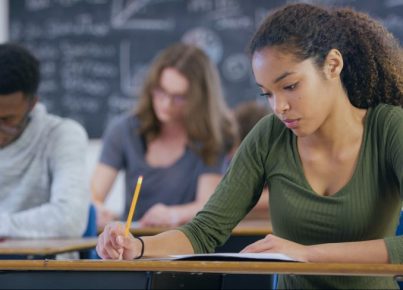In the last ten years, education has changed exponentially with a massive shift in focus from transmission teaching to more student based approaches. A significant part of this change has been the adoption of blended and flipped teaching techniques. However, education is not a fixed idea anymore. Teachers, students, and schools will continue to adapt in the coming years. In the next ten years, I envision a continued evolution in classrooms around the world where blended and flipped learning will gain even more prominence.
Artificial Intelligence for Real Learning
One factor I expect to influence the landscape of blended learning is the adoption of AI in education. With the advent of smart tutoring systems and virtual reality classrooms, it’s only a matter of time before the everyday learning environment is transformed again. The current blended teaching model relies on learning management systems, class websites, and shared information systems to give students access to 24/7 learning.
However, I think that educators will soon embrace cooperation with AI tutoring systems to help students develop their understanding of online learning modules. Furthermore, I envision teachers recording lessons to be broadcast through virtual reality classrooms all over the world. The advancement in technology will allow children to interact in real time with recorded content, accessing information based on their responses to the content. This change will allow an interactive classroom experience from anywhere in the world, at any time.
Another valuable role for virtual reality in the classroom will be the ability to give students experiential learning they would otherwise never experience. New technology is already making virtual reality experiments and expeditions a possibility for students. I think the next ten years will see a marked development both in this technology and how it’s used by teachers. I imagine science classes exploring the universe through virtual reality courses and sociology courses providing safe virtual tours of countries and cultures around the world.
A Shift in Classroom Focus
While the current flipped teaching method uses classroom time to review learned content and engage in activities, I believe the coming years will see another shift in focus. Since students will be able to interact with online lessons via virtual reality and access personalized tutoring through AI, classroom time will be free for other uses. It’s my belief that the resulting educational advancement will see students connected to learning like never before.
I see educators using school hours for real-world exploration, personal development, and experimentation. Imagine schools where children go on nature hikes to learn about the environment, collect soil samples and analyze the world around them daily. I believe this will soon be a reality in everyday classrooms. Instead of a limited number of outings, experiments and projects to work around planned lessons, students will benefit from continued hands-on work supplemented by online courses, AI tutoring and virtual reality class discussions.
Only time will tell how the continued development of edtech will benefit and transform education. However, I think it’s safe to say that blended learning is just beginning to blossom in classrooms around the world. The incorporation of more advanced technology and dedication of teachers will drive flipped learning to improve and provide a better-personalized education experience over the next ten years.
For students, the progression will mean a more interactive school day and keenly intuitive online lessons. They will be able to relate hands-on learning with virtual classwork at their own pace. It is my opinion that the change can only benefit the state of k-12 education and the future of children across the world.
How do you think flipped learning will change over the next ten years? What new approaches have you adopted to help personalize your students’ experiences? We want to hear your perspective on the evolution of blended learning.



